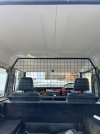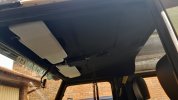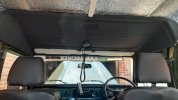Faffing around with the front head lining in the Ninety before recovering it later in the year.
Would there be any benefit giving it a coat of pva solution in the meantime?
Reason is I have 5 litre of the stuff hanging around and trying to find something to use it on.
Would there be any benefit giving it a coat of pva solution in the meantime?
Reason is I have 5 litre of the stuff hanging around and trying to find something to use it on.


